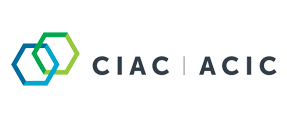Competitiveness and Investment in Alberta: A View from the Chemistry Industry
December 13, 2019
Alberta is seeing positive signs that the government is serious about attracting investment to the province, reinforcing competition and strengthening the province’s economy.
The Chemistry Industry Association of Canada (CIAC) sees 2019 as being a good year for the chemistry sector – a sector that contributes $58 billion to the Canadian economy annually and $16 billion of that here in Alberta.
In Alberta, we’re encouraged by the investment that is taking place right now at two propane to polypropylene facilities worth a combined $9 billion along with two other recently announced projects awaiting final investment decisions that are worth a combined $2.6 billion.
Premier Jason Kenney’s government has reaffirmed its commitment to the Petrochemicals Diversification Program which will see $1.1 billion of royalty credits supporting $15-20 billion of new incremental investment in the province, creating jobs and driving economic activity around Alberta.
And they didn’t stop there, the government has further strengthened the business environment in Alberta by:
- Decreasing corporate taxes to help make Alberta–based businesses more competitive
- Matching the federal treatment of accelerated capital cost allowance allowing for 100 per cent in year deduction of qualifying capital investment increasing the competitiveness of new capital investment in Alberta.
- Launching a new TEIR program that places an appropriate price on carbon, protects export-focused sectors such as chemistry and strengthens the case for low carbon chemistry investments in Alberta.
- Starting a Red Tape Reduction Program and changing the Municipal Government Act to enable property tax holidays for qualifying investment will help investments get from the C-suite to the construction yard.
At CIAC, we see a positive, growing business landscape for Alberta going forward. Given the province’s attractive low carbon resource base, its skilled workforce and a strong business environment we see unlimited potential for new investment in low carbon chemistry in Alberta.
Of course, opportunity does not come without challenges and we will continue to encourage the Alberta government to advocate for:
- An open and competitive national rail transportation network required to get chemistry products and other commodities to market. We urge Alberta to work with the class 1 railways, neighbouring provinces and the federal government to ensure that goods can move efficiently to end markets.
- New and innovative policies to attract research and development mandates to Alberta. Solving our most pressing problems, from climate change to building a circular economy for plastics, will require the ingenuity and products that chemistry provides. The chemistry sector is a knowledge industry and globally is responsible for the second-most patent grants of any sector and in Canada has the second-highest percentage of university graduates in our workforce – in both cases, only following the IT sector.
- Gas flows need markets, like that for LNG Canada, to ensure feedstocks are available to support chemistry investments
The economy of tomorrow will need chemistry solutions; whether it be for lowering GHG emissions, creating stronger, longer–lasting consumer products, or increasing the energy efficiency of our built environment, chemistry is at the heart of innovation. With proper investment and focus, many of these solutions will be researched, developed and manufactured right here in Alberta.
This is what happens when governments are serious about attracting new investment; we have $9 billion in investments underway, a further $2.6 billion announced in Alberta and anticipate another $20 billion more coming. Other provinces and the federal government should be paying close attention.





